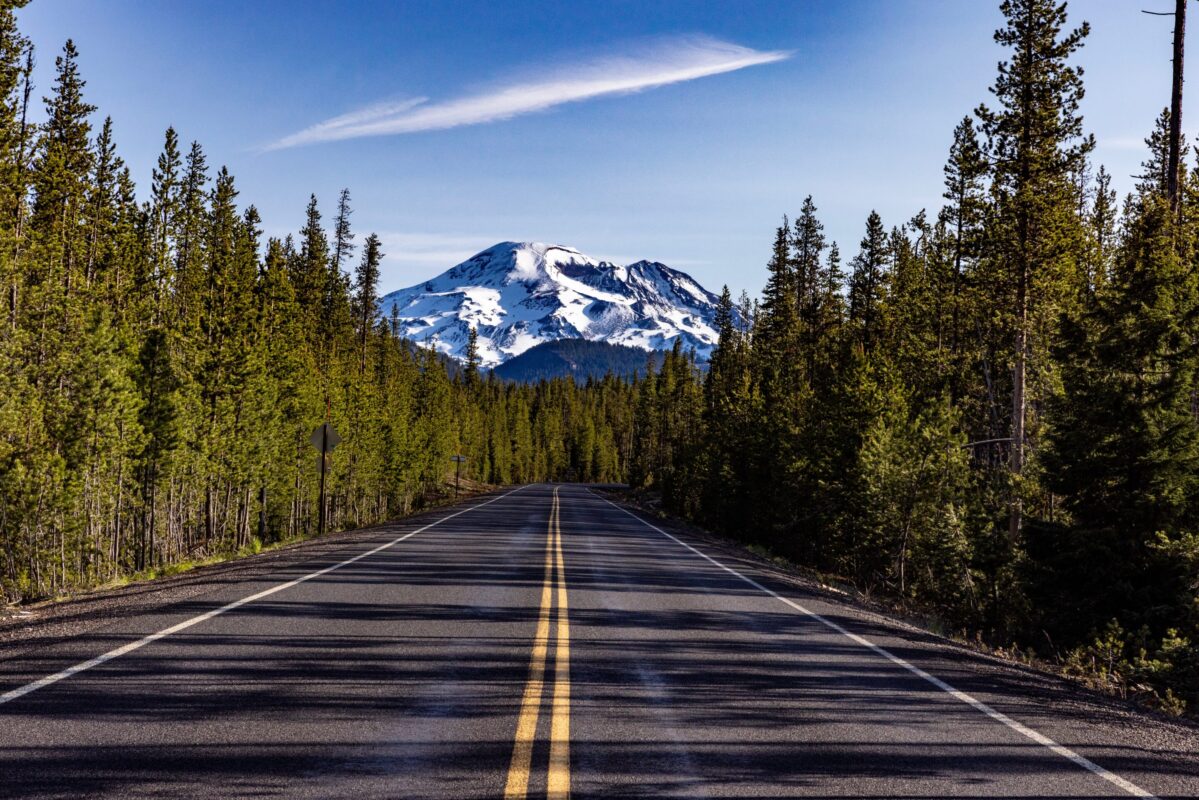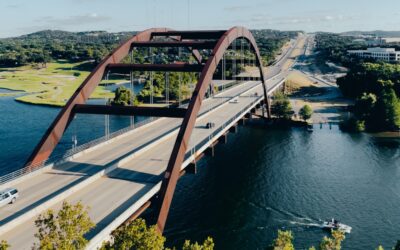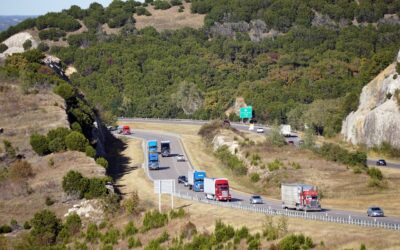The Pacific Northwest region of the United States is a captivating area known for its natural beauty and diverse landscape. This area primarily encompasses Washington and Oregon but occasionally includes Idaho, Montana, and Alaska. It is characterized by stunning coastlines, rugged mountain regions, and challenging transportation routes that require expertise and careful planning.
Its breathtaking coastlines along the Pacific Ocean offer picturesque views and opportunities for shipping and transport. From the rugged cliffs of Oregon to the beaches of Washington, these coastal routes provide unique logistical challenges for heavy transport. Certain transportation routes involve crossing bridges, traversing deep valleys, and navigating through tunnels. These routes demand careful planning and coordination to help ensure the safe and efficient transport of heavy equipment and machinery.
What You Need to Know About Heavy Transport in the Pacific Northwest
With all the difficulties the Pacific Northwest brings, it’s essential to know the ins and outs of transporting heavy machinery through this region, which is why we’ve created your go-to guide to heavy hauling in the Pacific Northwest.
What Is Heavy Transport?
Heavy transport refers to the transportation of heavy equipment and machinery from one location to another. It involves moving large, bulky, or oversized items that cannot be easily transported using standard methods. Heavy transport is essential for a variety of industries and individuals who require the movement of heavy machinery and equipment.
Individual business owners often rely on heavy transport services to move specialized equipment or machinery to their job sites. It can include construction companies transporting excavators, bulldozers, and cranes. Heavy hauling is also needed by or manufacturing companies moving large industrial machinery. Heavy transport enables these businesses to access the necessary equipment for their operations safely and efficiently.
Industries that Require Heavy Transport
Farmers also benefit from heavy transport when it comes to agricultural machinery. Tractors combines, and other farming equipment are often large and require specialized transport to move them between fields or to different farm locations. Heavy transport allows farmers to efficiently relocate their machinery and ensure it reaches its destination safely.
Additionally, industries like mining, forestry, energy, and infrastructure greatly rely on heavy transport services. These sectors often deal with oversized and heavyweight equipment and require specialized vehicles, trailers and experienced drivers to handle their transportation needs.
Common and Unique Hazards to the Region
When it comes to heavy hauling in the Pacific Northwest, there are both common and unique hazards to consider. Common hazards, such as difficult weather conditions like rain, snow, wind, and ice, can be avoided with proper preparation. Other potential risks, like road construction, pose challenges that can be planned for by mapping alternate routes.
Additionally, the region’s unique hazards, such as the rare possibility of volcanic activity and earthquakes, require awareness and planning. Being knowledgeable about these hazards allows for informed decision-making and proactive measures to ensure safe and successful heavy-hauling operations.
Common: The Weather
The Pacific Northwest experiences common weather hazards that can affect heavy hauling operations. Rainfall is frequent throughout the year, and snowfall occurs during the winter months in higher elevations. Windy conditions and icy roads can also create challenges for transporting heavy loads.
These weather conditions can impact visibility, road conditions, and the stability of the machinery. Drivers need to stay updated on weather forecasts, adjust their driving techniques accordingly, and take precautions to ensure the safety of the equipment. By being prepared, heavy haulers can successfully transport equipment through the common weather hazards in the Pacific Northwest.
Common: Road Construction
Road construction is common in the Pacific Northwest and can pose challenges for heavy hauling. Major and minor road construction projects can lead to temporary closures, detours, and congested traffic. However, these challenges can be avoided by careful planning and mapping out alternate routes in advance.
By staying informed about ongoing construction projects and coordinating with local authorities, heavy haulers can minimize delays and disruptions caused by road construction. Having contingency plans and alternative routes prepared ensures a smooth and efficient transportation process.
Unique: Natural Disasters
While unusual, the Pacific Northwest is known for natural phenomena that can affect heavy hauling. Any mountainous region faces a risk of landslides, mudslides, and rock slides in the warmer seasons and avalanches when snow is present, and the weather conditions are right. Additionally, they can be triggered by earthquakes. While infrequent, earthquakes can occur unexpectedly. The area is also home to volcanos, but they rarely pose an issue. However, it is still important to acknowledge the possibilities and be prepared.
These natural events require heavy haulers to have contingency plans in place. They also require drivers to stay informed about any potential risks. By being aware of these unusual hazards and taking necessary precautions, heavy equipment transporters can help ensure the safety and smooth operation of heavy haul transport.
Top Heavy Industries in the Pacific Northwest
There are many industries in the Pacific Northwest that require the movement of heavy equipment across North America. Forestry is a prominent industry, with the need to transport logging trucks, harvesters, and loaders.
Aerospace manufacturing is another major sector requiring large space equipment to be transported. Clean technology manufacturing and the agriculture industry also rely on heavy machinery transport. These industries highlight the importance of heavy equipment transport in the Pacific Northwest to support economic activities throughout North America.
Forestry
The forestry industry plays a significant role in the Pacific Northwest, and it involves the management and harvesting of timber resources. In this industry, heavy equipment is used to carry out various tasks. Logging trucks are commonly utilized to transport trees from the forest to processing facilities.
Harvesters are heavy machines that efficiently cut and process trees, while loaders are responsible for loading the timber onto trucks. Skidders are used to haul logs from the cutting site to a centralized location. The forestry industry heavily relies on the transport of these large and heavy equipment to ensure the efficient and timely processing of timber resources in the Pacific Northwest.
Aerospace Manufacturing
Aerospace manufacturing is a vital industry in the Pacific Northwest, specializing in the production of space equipment and parts. Heavy transport is required to haul these massive structures, such as rocket stages, spacecraft modules, and satellite components.
Specialized trailers and vehicles are utilized to ensure the safe and secure transportation of these oversized and delicate items. Often these massive components need to be taken apart and transported on multiple trucks. A project like that takes great coordination and expertise only professionals can bring. The Pacific Northwest serves as a hub for aerospace manufacturing, contributing to the advancement of space exploration and the transportation of heavy aerospace equipment across the region and beyond.
Clean Technology Manufacturing
Clean technology manufacturing is a significant industry in the Pacific Northwest, with a focus on producing renewable energy equipment, specifically large wind turbines. These towering structures play a vital role in harnessing the power of the wind to generate clean and sustainable electricity. However, the transportation of these massive turbines from manufacturing sites to their designated locations across the country is no small feat.
Heavy transport plays a crucial role in ensuring the successful delivery of these wind turbines. Specialized trucks and trailers are employed to carefully transport these structures, guaranteeing their safe and efficient transportation. These vehicles are equipped with the necessary mechanisms to securely hold and transport the wind turbine components, such as the blades, nacelle, and tower sections.
Transportation Requirements for Wind Turbines
Transporting wind turbines requires careful planning and coordination to overcome logistical challenges, such as maneuvering through narrow roads, navigating bridges, and complying with transportation regulations. Additionally, route surveys and inspections are conducted to identify any potential obstacles or issues that may arise during transportation.
The expertise and experience of heavy transport professionals are paramount in this industry. They possess the knowledge and skills to handle the unique challenges associated with transporting large wind turbines, ensuring that these valuable renewable energy assets arrive at their destination safely and intact.
Agriculture
The agriculture industry in the Pacific Northwest is vital for producing food and crops. It involves the cultivation of plants, raising livestock, and other farming activities. This industry heavily relies on various machines and equipment to increase efficiency and productivity. Tractors are the most versatile piece of equipment on a farm.
Combine harvesters are other large machines that cut and gather crops. This industry also uses irrigation systems for watering crops, hay balers for bundling hay, and sprayers for applying fertilizers and pesticides. These machines are essential for modern farming, helping farmers to manage their land, maximize yields, and meet the demands of a growing population. All these machines also require specialized equipment and trailers to transport over long distances.
How to Haul Equipment Over the Canada-United States Border
When it comes to hauling equipment over the Canada-United States border, there are important steps to follow to ensure a smooth and successful process. If your destination is Alaska, keep in mind that you will need to cross two borders.
Gather the Right Paperwork
Firstly, it’s crucial to familiarize yourself with the regulations and requirements for cross-border transportation. Regulations include understanding customs documentation, permits, and any specific restrictions or regulations that may apply to your equipment.
Next, you will need to gather the necessary documentation. Typically, this includes the bill of sale, title, or proof of ownership for the equipment being transported. Additionally, you may need to provide insurance documents, import/export permits, and any applicable safety certifications.
Prioritize Safety Precautions
Your equipment must meet all safety and operational requirements before crossing the border. Conduct a thorough inspection to ensure that all equipment is in proper working condition and meets the necessary standards. Doing this step will help ensure compliance and help prevent delays or complications during the crossing.
Hiring a trusted heavy equipment shipping company with experience in cross-border shipping will save you stress, time, and money. They can assist with completing the required paperwork, navigating the customs process, and providing guidance on the most efficient and cost-effective transportation methods.
Transporting Heavy Equipment to Alaska
When transporting equipment to Alaska, you will need to cross two borders: the Canada-United States border and the Alaska-Canada border. Each border has its own specific procedures and requirements, so it is important to be well-informed and prepared.
Communication Is Important
Prioritize communication and coordination throughout the entire transportation process. Stay in touch with the driver, customs officials, and any other relevant parties to ensure smooth logistics and address any potential issues promptly.
Logistics Require Careful Planning
Lastly, it is essential to consider the logistical aspects of the journey, including the choice of transportation mode and route planning. Depending on the size, weight, and type of equipment, you may opt for transport by road, rail, or even sea. Mapping out the most efficient and suitable route will help minimize travel time and potential challenges along the way.
Finding a Heavy Haul Company
When it comes to hauling oversized equipment in the Pacific Northwest, Trusted Dispatch is the best place to find a trustworthy and experienced driver for your heavy equipment transportation needs. They specialize in connecting customers with reliable haulers who have the expertise to handle heavy loads with care and efficiency.
Getting started is a simple 3-step process to get a free, instant quote.
- Step 1: Enter your pickup location
- Step 2: Enter your drop-off destination
- Step 3: Enter the specifications of your haul
You’ll be asked to provide any specific instructions or special considerations. Sharing images of your equipment, machinery, or load also helps drivers understand the requirements and confirm your shipment sooner.
Once you submit your quote request, Trusted Dispatch will match you with qualified and vetted heavy equipment hauling drivers in the Pacific Northwest. These drivers have been carefully screened to ensure their reliability and expertise. They will review your request and provide you with a competitive and transparent quote for the transportation service.
Reliable Heavy Hauling in the Pacific Northwest
With Trusted Dispatch, you can have peace of mind knowing that your heavy equipment will be in the hands of experienced and reliable professionals. Their dedication to customer satisfaction and their streamlined quote request process make them the go-to choice for heavy hauling in the Pacific Northwest. So, get started today by visiting their website and requesting your free, instant quote.





